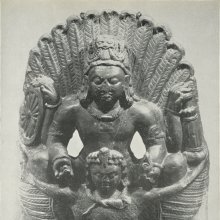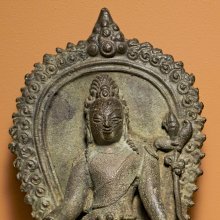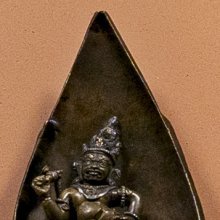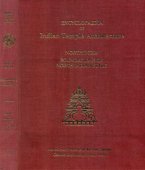Eastern India: 1 definition
Introduction:
Eastern India means something in the history of ancient India. If you want to know the exact meaning, history, etymology or English translation of this term then check out the descriptions on this page. Add your comment or reference to a book if you want to contribute to this summary article.
Images (photo gallery)
India history and geography
Source: archive.org: Cunningham’s Ancient Geography of IndiaEastern India comprised Assam and Bengal proper, including the whole of the Delta of the Ganges, together with Sambhalpur, Orissa, and Ganjam.
According to Xuanzang (Hwen Thsang), in Central and Eastern India, the whole of the different states, from the famous city of Sthaneswara to the mouth of the Ganges, and from the Himalaya mountains to the banks of the Narbada and Mahanadi rivers, were subject to Harsha Varddhana, the great King of Kanoj. Jalandhara, the most easterly district of the Panjab, was also subject to him ; and it is highly probable that the ruler of Taki, or the plains of the Panjab, must likewise have been a dependent of Kanoj, as we are informed by the Chinese pilgrim that Harsha Varddhana advanced through his territory to the foot of the Kashmir hills, for the purpose of coercing the ruler of that country to deliver up to him a much-venerated tooth of Buddha.

The history of India traces the identification of countries, villages, towns and other regions of India, as well as mythology, zoology, royal dynasties, rulers, tribes, local festivities and traditions and regional languages. Ancient India enjoyed religious freedom and encourages the path of Dharma, a concept common to Buddhism, Hinduism, and Jainism.
See also (Relevant definitions)
Partial matches: India.
Full-text (+35): Surapana, Varttani, Kalinga, Samatata, Bamgalica, Gadaba, Shrimanasharma, Mudgara, Purvadesha, Brahma, Shona, Lakshmanasena, Ilan-tattan, Odra, Nepala, Lohitagiri, Brihadgriha, Gaudabangala, Cakora, Brahmottara.
Relevant text
Search found 34 books and stories containing Eastern India; (plurals include: Eastern Indias). You can also click to the full overview containing English textual excerpts. Below are direct links for the most relevant articles:
Buddhist records of the Western world (Xuanzang) (by Samuel Beal)
Chapter 3 - Country of Kie-chu-hoh-khi-lo (Kajughira or Kajingarha) < [Book X - Seventeen Countries]
Chapter 4 - Country of Pun-na-fa-t’an-na (Pundravardhana) < [Book X - Seventeen Countries]
Chapter 1 - Country of Kie-jo-kio-she-kwo (Kanyakubja) < [Book V - Six Countries]
Gati in Theory and Practice (by Dr. Sujatha Mohan)
Gati found in Chau of Eastern India < [Chapter 4 - Practice of Gati]
Jain Remains of Ancient Bengal (by Shubha Majumder)
Researches on Jainism in Ancient Bengal < [Chapter 1 - Introduction and Scope of the Present Study]
Tīrthaṅkara Mahāvīra and Jainism in Ancient Bengal < [Chapter 3 - Historical Background of Jainism in Ancient Bengal]
Early Chola Temples (by S. R. Balasubrahmanyam)
Temples in Aintali < [Chapter X - Historical Survey]
Temples in Kodumbalur < [Chapter II - Temples of Parantaka I’s Time]
Impact of Vedic Culture on Society (by Kaushik Acharya)
Sanskrit Inscriptions (A): The Vākāṭakas < [Chapter 3]
6. Sacrifices With Political Significance < [Chapter 2]
Sanskrit Inscriptions (K): The Paramāras < [Chapter 3]
Bihar and Eastern Uttar Pradesh (early history) (by Prakash Narayan)
Trade by Water < [Chapter 2 - Economic and Urban Processes]
Use of Iron and Material Growth < [Chapter 2 - Economic and Urban Processes]
Material Growth and the ruling class < [Chapter 2 - Economic and Urban Processes]
Related products





